I am trying to build an audio amplifier circuit based on this design using an LM386 opamp. On the output side (pin5) an Arduino is connected constantly reading out the pin
#include <Arduino.h>
const int analogPin = A0;
void setup() {
Serial.begin(9600);
pinMode(analogPin, INPUT);
Serial.println("Setup");
}
int i=0;
void loop() {
int val = analogRead(analogPin);
Serial.print(val); Serial.print(" :"); Serial.println(i++);
delay(1);
}
The result is constantly reads ~30 (out of 1023 range of the analog pin). I have redrawn the circuit looking only on the breadboard (soldered PCB) and added the measured voltages across key points (using oscilloscope, time scale 5ns to recognize fast changes).
After inducing sound (knocking, clapping,...) no change on the output side of the opamp is detected.
A similar article states
Pin 5 is the output. It is biased to 1/2 of the supply voltage Vs
The opamp is supplied with Vdd (4.64V). For the power supply I used the Arduinos internal 5V and an external power source, connected via the same Vss.
Is the detection too slow? Do I have an error in my schematic?
